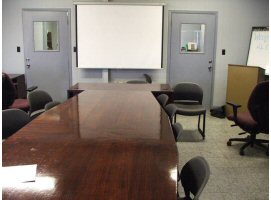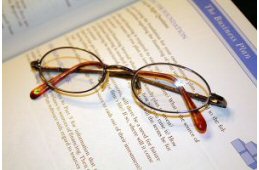|
How to Deliver First Class Training on your First Day

Introduction
 The lecture in its many forms is the most commonly used method for transferring information in training. There are, however, serious questions regarding the effectiveness of the traditional lecture approach. Although the lecture method is used extensively in education, academicians often are not trained in giving effective lectures. The lecture in its many forms is the most commonly used method for transferring information in training. There are, however, serious questions regarding the effectiveness of the traditional lecture approach. Although the lecture method is used extensively in education, academicians often are not trained in giving effective lectures.
The lecture was established formally centuries ago as a teaching process that began with a literal reading of important passages from the text by the master, followed by the master’s interpretation of the text. Participants were expected to sit, listen and take notes.
I need to know more about how to make my presentations more interactive. CLICK HERE
When a Training Lecture is Appropriate
Training Lecture is appropriate when: |
Training Lecture is not appropriate when: |
Disseminating information quickly to a large audience |
Presenting complex, detailed or abstract information |
Presenting new information before using other media or activities (e.g., a brief lecture before playing a videotape) |
Dealing with information concerning feelings and attitudes |
Providing an overview of a topic |
Training in psychomotor (hands-on) skills |
Arousing interest in a topic |
Teaching high-level cognitive skills (e.g., synthesis and evaluation) |
1. Characteristics of the Lecture Method
 The lecture format for large classes is outdated and ineffective. Lecturing is frequently a one-way process unaccompanied by discussion, questioning or immediate practice, which makes it a poor teaching method. So why do we lecture? Most trainers learn how to teach based on their experiences as participants. This “teach as I was taught” approach tends to perpetuate the lecture as a passive, one-way method of transferring information. The lack of training in presenting effective lectures, rather than the method itself, may be the greatest weakness of the lecture. The lecture format for large classes is outdated and ineffective. Lecturing is frequently a one-way process unaccompanied by discussion, questioning or immediate practice, which makes it a poor teaching method. So why do we lecture? Most trainers learn how to teach based on their experiences as participants. This “teach as I was taught” approach tends to perpetuate the lecture as a passive, one-way method of transferring information. The lack of training in presenting effective lectures, rather than the method itself, may be the greatest weakness of the lecture.
Lectures are generally described from the instructor’s point of view, and the participant’s need for interaction with the instructor is not addressed. In fact, lack of interaction is considered one of the major limitations of the traditional lecture. Furthermore, when participants have copies of the lecture notes or a text, a significant percentage would prefer reading them rather than attending classes that offer little or no interaction.
Learning must be an intellectually challenging experience whereby participants through extensive interactive teaching are able to gain thorough conceptual understanding. Interactive learning is enhanced through the effective use of key teaching skills including questioning, demonstrating, providing positive reinforcement and reviewing.
 The use of active learning activities including analysis of case reports, problem-solving exercises, participant presentations and participants working cooperatively in groups are recommended. The majority of training participants are active learners requiring learning experiences that engage their senses. Thus we recommend using a variety of teaching styles with an emphasis on participatory and experiential learning. The use of active learning activities including analysis of case reports, problem-solving exercises, participant presentations and participants working cooperatively in groups are recommended. The majority of training participants are active learners requiring learning experiences that engage their senses. Thus we recommend using a variety of teaching styles with an emphasis on participatory and experiential learning.
Table 1 compares the effective to the ineffective lecture. In the effective active lecture the instructor involves participants through a highly interactive and participatory approach using a variety of teaching techniques. Because of the questioning, interaction and involvement, participants are actively engaged and connected to the trainer. By contrast, in an ineffective passive lecture, the instructor stands at a lectern and speaks with minimal participant interaction. Not surprisingly, after a few minutes participants find it difficult to concentrate, as there is little or no stimulation.
Table 1. Characteristics of the Effective and Ineffective Lecture
Characteristics of the Effective Lecture |
Characteristics of the Ineffective Lecture |
Trainer-participant interaction |
100% trainer talk, with limited or no interaction |
Two-way communication |
One-way communication |
Trainer-participant questions |
Few if any questions (trainer or participant) |
Shared responsibility for active learning |
Participant depends on trainer for all information |
Small group, problem-solving activities |
No participant activities |
Variety of supporting media |
No supporting media |
Limited note taking required (participants have copies of lecture notes) |
Extensive note taking required |
Efforts to improve training must focus on changing the role of the participant from passive observer to active participant . In this approach, the responsibility for meeting learning objectives is shared by the instructor and each participant. One of the most important steps in achieving this shared responsibility is careful planning. First, however, the instructor must be sure that the lecture is appropriate for the particular learning situation. When properly planned for the appropriate type of material, the lecture can be a very effective method of transferring information to participants.
Table 2. When to Lecture
Lecture is appropriate when: |
Lecture is not appropriate when: |
Disseminating information quickly to a large audience |
Presenting complex, detailed or abstract information |
Presenting new information before using other media or activities (e.g., a brief lecture before playing a videotape) |
Dealing with information concerning feelings and attitudes |
Providing an overview of a topic |
Training in psychomotor (hands-on) skills |
Arousing interest in a topic |
Teaching high-level cognitive skills (e.g., synthesis and evaluation) |
Back To Top
2. Planning Interactive Training
Effective lectures do not just happen—they are planned. The trainer must:
- Establish the purpose of the lecture
- Consider the logistics of the lecture
- Plan a variety of approaches (e.g., use of questioning, media, small group activities)
- Prepare a set of lecture notes
A. Purpose of the Lecture
 The primary purpose of the lecture is to transfer information from the instructor to the participant. Before developing the content of the lecture, it is a good idea to clearly state the purpose of the lecture. The purpose should describe in general terms what the participants will learn during the lecture. It usually is not written in measurable terms. By contrast, an objective is a precise and measurable statement describing what the participant will learn by attending the lecture. Depending on the design of the lecture, there may be a purpose, objective or both. In some situations the objective will also describe the criteria participants must meet in order to demonstrate they have learned the content of a lecture. The primary purpose of the lecture is to transfer information from the instructor to the participant. Before developing the content of the lecture, it is a good idea to clearly state the purpose of the lecture. The purpose should describe in general terms what the participants will learn during the lecture. It usually is not written in measurable terms. By contrast, an objective is a precise and measurable statement describing what the participant will learn by attending the lecture. Depending on the design of the lecture, there may be a purpose, objective or both. In some situations the objective will also describe the criteria participants must meet in order to demonstrate they have learned the content of a lecture.
B. Lecture Logistics
After determining the purpose and objective of the lecture, the instructor should next consider its length. In a study of the use of videotaped lectures, the recommended lecture time is 45 minutes, including approximately 15 minutes devoted to audience interaction. Interactive lectures should last no longer than 60 minutes without giving the participants a break.
 The number of participants attending a lecture has a significant impact on how the lecture is presented. Group size determines the use of questions, amount of interaction, selection and use of media (e.g., power-point slides, video, audio) and use of small group activities such as case studies, role plays and problem-solving exercises. The number of participants attending a lecture has a significant impact on how the lecture is presented. Group size determines the use of questions, amount of interaction, selection and use of media (e.g., power-point slides, video, audio) and use of small group activities such as case studies, role plays and problem-solving exercises.
The most common form of interaction during a lecture is questioning. Table 3 shows estimates of how the number of participants can have an impact on the use of questioning.
Table 3. The Effect of Group Size on Questioning Techniques
Number of s |
Description of Questioning Techniques |
1–20 |
Both trainer and participants ask many questions. Participants discuss lecture content with trainer and among themselves. |
21–30 |
Trainer asks questions, which participants answer. Participants ask some questions. There is some discussion among participants. |
31–50 |
Trainer asks questions, which participants answer. Participants ask some questions. There is limited discussion among participants. |
51–100 |
Trainer asks questions, and only a small number of the participants answer them. Participants ask some questions. Participants are able to discuss content only with other participants seated near them. There is little or no feedback to the trainer. |
> 100 |
Trainer asks questions, and participants raise their hands to either agree or disagree. There are very few comments or questions from the participants. Participants are able to discuss content only with other participants seated near them. There is little or no feedback to the trainer. |
It is important to keep audience size in mind at every step of designing the lecture. Failure to do so will undoubtedly have a negative impact on its effectiveness.
The size and shape of the lecture room size and shape of the lecture room also influence the design and delivery of the lecture.
Consider several common situations.
-
A room with tables arranged in a U-shape and chairs for 20 participants is an ideal format for small group lectures. It allows the presenter to interact extensively with the participants and use a variety of small group methods and media.
-
A large room with 100 chairs arranged theater-style with an aisle down the middle makes it possible for the lecturer to move up and down the aisle to interact with participants. The lecturer can ask participants to turn their chairs around to form small groups for discussion.
-
A lecture hall with a sloped floor and 200 seats firmly anchored in place makes it difficult to divide participants into small groups. In this situation, one of the few alternatives is to ask participants to turn to their neighbor to discuss a question, react to a slide or solve a problem being shownon the projection screen.
 The final logistical consideration is the media equipment available. Most lecture halls are designed to accommodate the use of slides, video and computer-based projections. In order to develop an effective lecture, the trainer must design and use a variety of media effectively. The final logistical consideration is the media equipment available. Most lecture halls are designed to accommodate the use of slides, video and computer-based projections. In order to develop an effective lecture, the trainer must design and use a variety of media effectively.
Help me plan my next training. I need to know more about training logistics when I am presenting or training. CLICK HERE
C. Lecture Components
There are 5 approaches to maximizing participants’ understanding and retention during lectures. These can be used to help ensure the effective transfer of knowledge.
-
Use an opening summary. At the beginning of the lecture, present major points and conclusions to help participants organize their listening.
-
Present key terms. Reduce the major points in the lecture to key words that act as verbal subheadings or memory aids.
-
Offer examples. When possible, provide real-life illustrations of the ideas in the lecture.
-
Use analogies. If possible, make a comparison between the content of the lecture and knowledge the participants already have.
-
Use visual backups. Use a variety of media to enable participants to see as well as hear what is being said.
 The key to an effective lecture style is to break down the lecture into its component parts and use a variety of approaches within each component. This is especially critical when a group of participants will be attending a series of lectures by the same trainer. The three main parts of a lecture are the introduction, body and summary. The key to an effective lecture style is to break down the lecture into its component parts and use a variety of approaches within each component. This is especially critical when a group of participants will be attending a series of lectures by the same trainer. The three main parts of a lecture are the introduction, body and summary.
The purpose of the introduction is to capture the interest and attention of the participants. It can also serve to make participants aware of the instructor’s expectations and encourage a positive learning climate. A good introduction is critical to the success of a lecture.
Tips for Creating an Effective Introduction
- Review lecture objective(s).
- Ask a rhetorical question.
- Ask for a show of hands in response to a general question.
- Ask a series of questions related to the lecture topic.
- Use an interesting or famous quotation.
- Relate the topic to previously covered content.
- Use a case study or problem-solving activity.
- Use a videotape or other media.
- Show an appropriate cartoon over power-point.
- Make a provocative statement to encourage discussion.
- Give a demonstration.
- Use a game or role play.
- Relate the topic to future work experiences.
- Share a personal experience.
- Relate the topic to a real-life experience.
The instructor can then make a smooth transition into the body of the lecture once the attention of the participants has been captured with an interesting introduction, The body of the lecture contains the core of the information to be transferred to the participants. We recommend to use brain-storming, discussions, problem-solving activities, case studies and games to make the lecture more interactive.
The purpose of the lecture summary is to draw together the critical information presented and ensure that participants leave the lecture with a clear under-standing of this information. The summary should be brief and address only main points. There are several techniques which can be used to summarize a lecture:
-
Ask the participants for questions. This gives participants an opportunity to clarify their understanding of the content.
-
Ask questions of the participants. Several questions which focus on the main points of the content may be used to summarize the content of the lecture.
-
Use a slide or flipchart to review the summary points.
More tips? CLICK HERE
D. Lecture Notes
 Many trainers make the mistake of thinking that they know their content well enough to deliver a lecture without notes to guide them. This is very difficult for most instructors and usually results in an unsatisfactory experience for both the instructor and the participant. Instead, the instructor should prepare lecture notes to serve as a script or set of cues to follow during the lecture. Lecture notes are key words, phrases and other reminders (e.g., audiovisual cues, questions, examples, notes for activities) organized into an outline format. If a text rather than an outline format is used, the lecturer may begin to read the notes and the participants will become bored. Many trainers make the mistake of thinking that they know their content well enough to deliver a lecture without notes to guide them. This is very difficult for most instructors and usually results in an unsatisfactory experience for both the instructor and the participant. Instead, the instructor should prepare lecture notes to serve as a script or set of cues to follow during the lecture. Lecture notes are key words, phrases and other reminders (e.g., audiovisual cues, questions, examples, notes for activities) organized into an outline format. If a text rather than an outline format is used, the lecturer may begin to read the notes and the participants will become bored.
Lecture notes help the instructor:
- Stay on topic and prevent getting lost.
- Cover the main points without forgetting anything.
- Glance at a specific point and quickly return attention to the participants.
- Relax and focus on delivery instead of worrying about what point to make next.
There are seven basic approaches the instructor can use to outline key points:
- Standard sheets of paper (full-page or two-column)
- Note cards
- Flipchart pages
- Slides
- Computer-based projections
- Pages from a report, text or manual (with notes added and key terms highlighted)
Back To Top
3. Presenting Interactive Training
 An effective lecture can be one of the most exciting and rewarding aspects of a trainer’s responsibilities. The instructor who is able to maintain interest with an exciting, dynamic delivery using a variety of instructional methods is more likely to be successful in helping participants reach the learning objectives. The time and effort invested in planning pay off as the instructor and participants interact, discuss, question and work together. An effective lecture can be one of the most exciting and rewarding aspects of a trainer’s responsibilities. The instructor who is able to maintain interest with an exciting, dynamic delivery using a variety of instructional methods is more likely to be successful in helping participants reach the learning objectives. The time and effort invested in planning pay off as the instructor and participants interact, discuss, question and work together.
Questioning Techniques
One of the most effective techniques a trainer can use during a lecture to help ensure interaction is to ask and encourage questions. Questions can be used to introduce lectures, stimulate interaction throughout the lecture and summarize content. Involving participants through questioning helps to maintain their attention, which is critical when topics are complex and lectures are long. Suggestions for using questions include:
-
Ask questions of the entire group. Those who wish to volunteer may do so, although the trainer must guard against some participants dominating the discussion.
-
Target a question to a specific participant. When the audience is relatively small, this technique can be used to involve more of the participants.
-
Use participants’ names when asking and answering questions—this recognition is a powerful motivator.
-
Provide positive reinforcement when participants respond. This praise will help to create a very positive climate and will encourage more participants to enter into the discussion.
-
Repeat participants’ questions and answers to ensure that all participants hear the discussion.
-
When a participant asks a question, the trainer can answer the question directly, respond by asking the participant a different, related question or offer the question to the other participants.
The key in asking and answering questions is to avoid a pattern. If the trainer always asks and answers questions using the same pattern, this critically important teaching skill will have limited impact.
Presentation Techniques
The skilled lecturer uses a variety of approaches to involve participants, maintain interest and avoid a repetitive lecturing style. A number of techniques can be used to make a lecture more interactive and effective:
-
Use the lecture notes prepared during the planning stage. The notes include reminders and key points in the lecture introduction, body and summary.
-
Open the lecture with a good introduction designed to capture the interest and attention of the participants.
-
Communicate on a personal level. The trainer should attempt to relate to the participants during the lecture.
-
Maintain eye contact with the participants. Eye contact gives the trainer feedback on how well participants understand the content and helps to communicate a caring attitude on the part of the trainer.
-
Exhibit enthusiasm about the topic. Smiling, moving around the room and gesturing with hands and arms project a feeling of energy and excitement.
-
Project the voice so that those in the back of the room can hear clearly. For large lecture halls, use a microphone if necessary, with a long cord that will permit movement around the room.
-
Avoid the use of slang or repetitive words, phrases or gestures that may become distracting with extended use. Avoid the use of fillers (e.g., “um,” “err,” “you know”).
-
Use a variety of audiovisual media.
-
Ask a number of questions and encourage participants to ask questions.
-
Provide positive feedback when participants ask questions, answer questions or make comments. Use participants’ names as often as possible.
-
Display a positive use of humor (e.g., humorous transparencies or slides, topic-related stories).
-
Make smooth transitions between parts of the lecture. These transitions should be highlighted in the lecture notes and might include:
-
A brief overview of the next topic
-
A review of the agenda between topics
-
A change of media
-
An interim summary before a new topic
-
An activity (case study or problem-solving activity)
-
Close the lecture with a brief but powerful summary.
Tips to Reduce Presentation Anxiety
- Avoid eating a big meal before the lecture. Not only will a full stomach make you drowsy, but it makes it more difficult to move around the room with energy.
- Arrive early to make sure that everything is ready before the first participant arrives.
- Make sure all of the media equipment is working.
- Locate and check the lighting and temperature controls.
- Decide where the lecture notes will be placed (e.g., on a lectern, desk, table) when they are not being held.
- Have a glass of water available during the lecture.
- Go for a short walk just before the lecture.
- Look over your lecture notes one last time.
- Greet participants as they enter the room. Shake their hands, welcome them to the lecture and talk to as many of them as possible.
- Take a few deep breaths to relax before beginning the lecture.
|
Back To Top
4. Evaluating Training Presentations
Evaluation questions are easy to ask and often difficult to answer. The trainer would like to know if the lecture made a difference. How effective was the trainer in transferring knowledge to the participants? Will the information have an impact? Did the participants enjoy the lecture? How can the trainer improve the next lecture?
 There are three formal techniques which can be used to evaluate the quality of a lecture presentation. The first is feedback from the participants and typically involves asking participants to complete an evaluation form. The second is a self-evaluation that uses a video recording. The third formal evaluation technique involves the use of an observer. Participant feedback forms are used regularly. There are three formal techniques which can be used to evaluate the quality of a lecture presentation. The first is feedback from the participants and typically involves asking participants to complete an evaluation form. The second is a self-evaluation that uses a video recording. The third formal evaluation technique involves the use of an observer. Participant feedback forms are used regularly.
The most effective technique a trainer can use to improve the quality of presentation skills is to critique a videotape of her/his lecture critique. When video-taping is feasible, it is strongly recommended that the trainer periodically record lectures. Analyzing a video allows the trainer to identify positive and negative behaviors and to set specific goals for improving the quality of lectures. The trainer can do a self-analysis or may sit with an experienced presenter who will help to analyze the lecture. In either case, the trainer may refer to a lecture skills checklist to identify presentation strengths and areas needing improvement.
Another evaluation approach involves the use of an observer. The observer must be an experienced presenter who watches the lecture and takes notes using a lecture skills checklist. The trainer and observer may decide to videotape the lecture also. Following the lecture, the observer provides feedback about aspects of the lecture that were effective and helps the trainer identify those lecture skills needing improvement.
Once the trainer has received feedback regarding one or more lectures, goals can be established for improving her/his lecture skills. The key to giving successful lectures is practice. Using this evaluation process will result in the strengthening of positive behaviors and the elimination of negative ones.
Follow this three-step process to conduct a self-evaluation:
- Arrange to have the lecture videotaped. Explain to the participants the reason for the recording equipment.
- At the conclusion of the lecture, distribute a participant satisfaction form (if applicable).
- Using a lecture skills checklist, watch the videotape (with an experienced presenter if there is one) and critique the performance.
|
 Summary Summary
With planning and effective presentation techniques, the lecture can be a highly effective and interactive method for transferring knowledge to participants. If the lecture is carefully planned, the trainer will have a clear purpose of the lecture and will have considered the logistics associated with the number of participants, amount of time allocated for the lecture, room size and available media. Planning will also help ensure that the trainer uses a variety of approaches to introduce, deliver and summarize the lecture. Lecture notes in outline form will help the instructor give an effective presentation.
Other key points to remember in preparing and delivering a lecture:
-
The first few minutes of a lecture are important. Plan them well!
-
Verbal communication skills are critical. These include appropriate voice projection, avoiding fillers, using participants’ names, making smooth transitions, using examples and providing praise.
-
Nonverbal communication skills also are very important. These include eye contact, positive facial expressions, gestures and movement.
-
Effective questioning and interaction are critical to the success of the lecture. Questioning skills include planning questions in advance, asking a variety of questions, using participants’ names and providing positive feedback.
-
The lecture should be summarized by asking for questions, asking questions and using media to review main points.
-
An evaluation using a video recording or an observer can assist the lecturer in assessing the quality of the presentation and improving lecture skills.
I want to know how I can measure my company’s training effectiveness. I want to know where my training money is going. CLICK HERE
Back To Ideas
FAQs/Contact Us/Motivational & Inspirational Quotes/Useful Sites
Customer Service/Private Policy
Copyright © 2006 Szetho Consultancy - All rights reserved |


 The lecture in its many forms is the most commonly used method for transferring information in training. There are, however, serious questions regarding the effectiveness of the traditional lecture approach. Although the lecture method is used extensively in education, academicians often are not trained in giving effective lectures.
The lecture in its many forms is the most commonly used method for transferring information in training. There are, however, serious questions regarding the effectiveness of the traditional lecture approach. Although the lecture method is used extensively in education, academicians often are not trained in giving effective lectures. 








